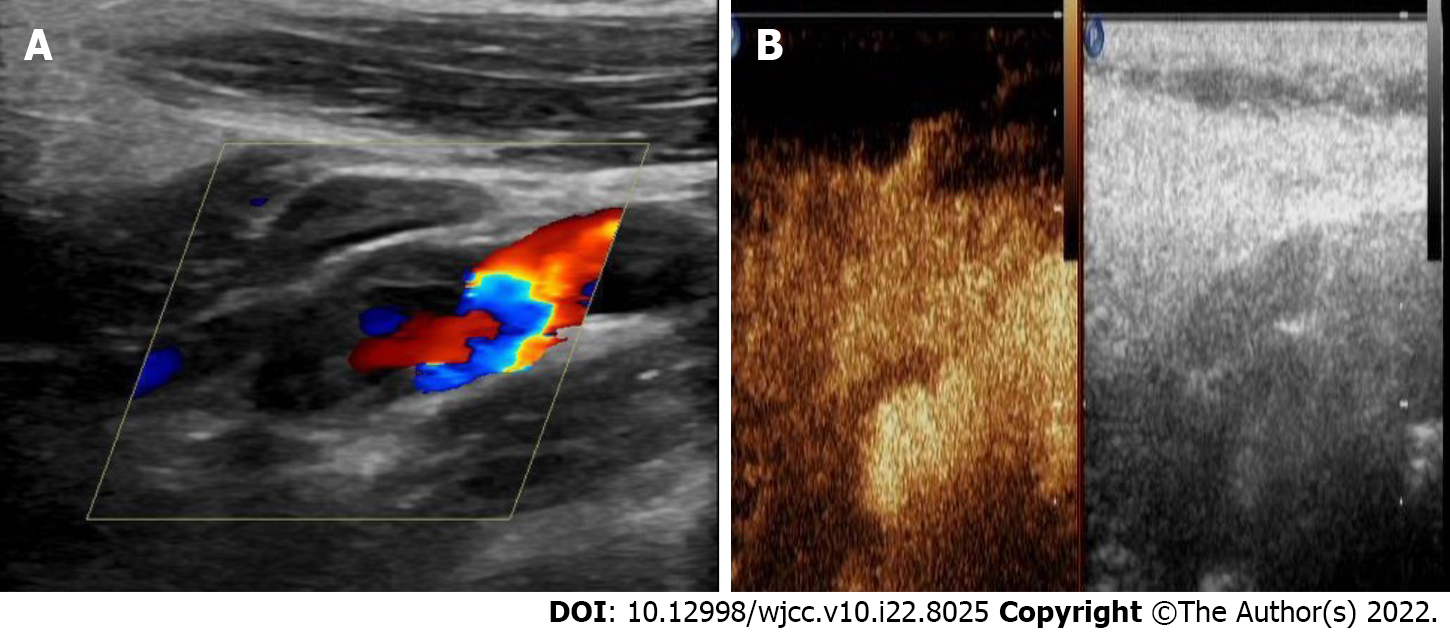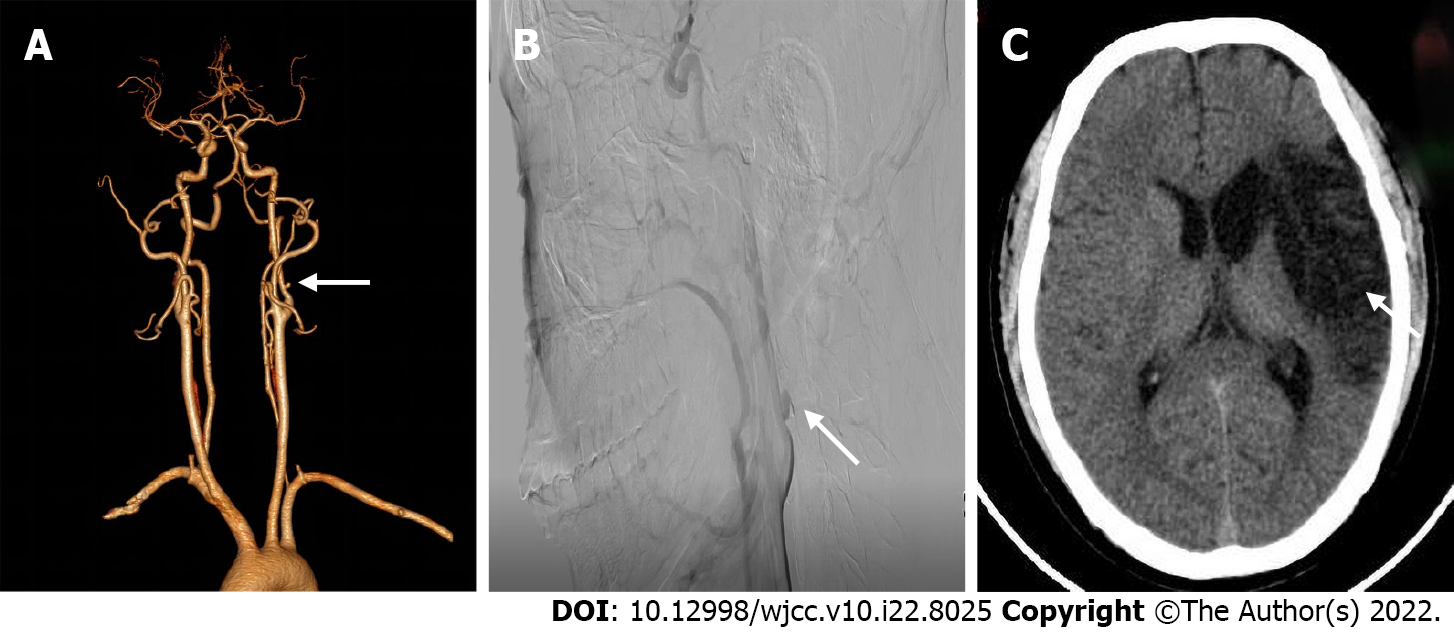Copyright
©The Author(s) 2022.
World J Clin Cases. Aug 6, 2022; 10(22): 8025-8033
Published online Aug 6, 2022. doi: 10.12998/wjcc.v10.i22.8025
Published online Aug 6, 2022. doi: 10.12998/wjcc.v10.i22.8025
Figure 1 Ultrasonography and contrast-enhanced ultrasound of the carotid artery.
A: Conventional carotid artery ultrasonography showing a connection of the mass with the left internal carotid artery (ICA); B: Contrast-enhanced ultrasound of the carotid artery showing contrast agent filling in the distended area of the left ICA, but no enhancement in the low echo area of the mural.
Figure 2 Left internal carotid artery pseudoaneurysm with acute ischemic stroke.
A: Computed tomography (CT) angiography reconstruction shows a nodular mass with mural thrombus in continuity with the adjacent left internal carotid artery lumen; B: Digital subtraction angiography indicates a pseudoaneurysm at the origin of the left internal carotid artery with mild stenosis; C: Cerebral CT showing an area of low-density foci in the left frontotemporal and centroparietal regions, which indicates left ischemic stroke.
Figure 3 Follow-up imaging examinations.
A: On computed tomography angiography reconstruction, the size of pseudoaneurysm at the origin of the left carotid artery is 4 mm × 3 mm which was significantly smaller than that observed 6 mo ago; B: On digital subtraction angiography, the size of pseudoaneurysm at the origin of the left internal carotid artery is 6 mm × 5 mm, which was smaller than that observed 3 mo ago; C: Cerebral computed tomography shows a large encephalomalacia foci in the left temporal-basal region, which was consistent with the convalescent stage of ischemic stroke.
- Citation: Zhong YL, Feng JP, Luo H, Gong XH, Wei ZH. Spontaneous internal carotid artery pseudoaneurysm complicated with ischemic stroke in a young man: A case report and review of literature. World J Clin Cases 2022; 10(22): 8025-8033
- URL: https://www.wjgnet.com/2307-8960/full/v10/i22/8025.htm
- DOI: https://dx.doi.org/10.12998/wjcc.v10.i22.8025











